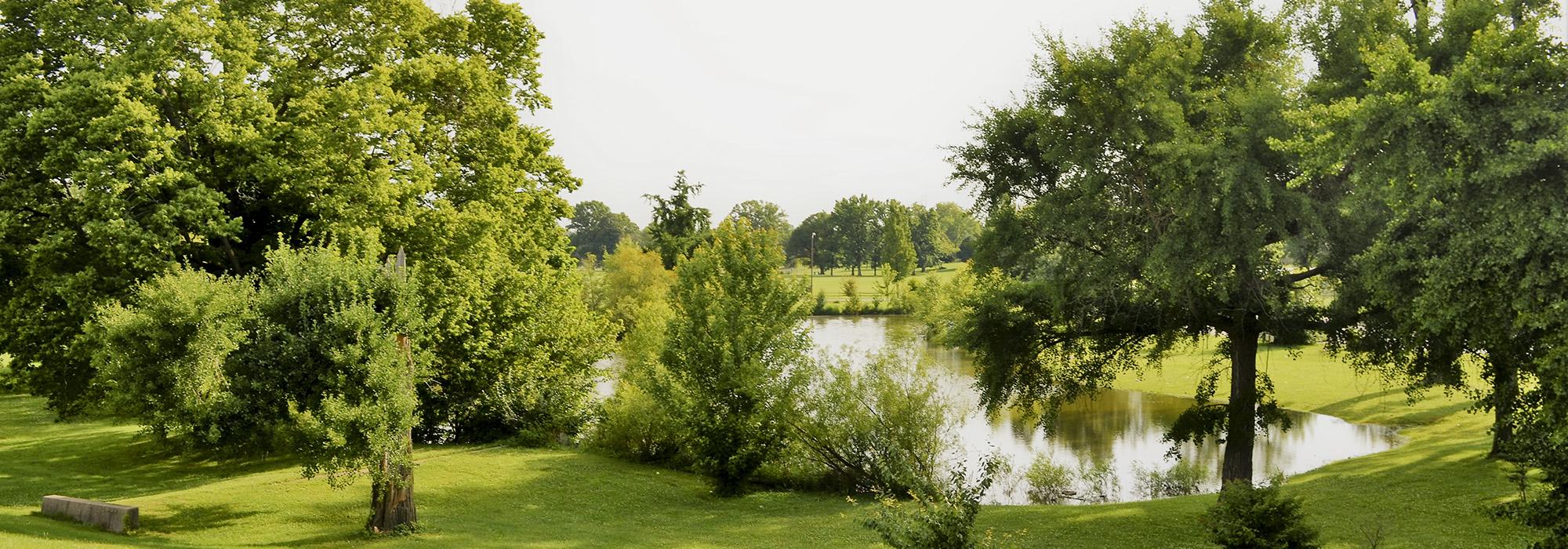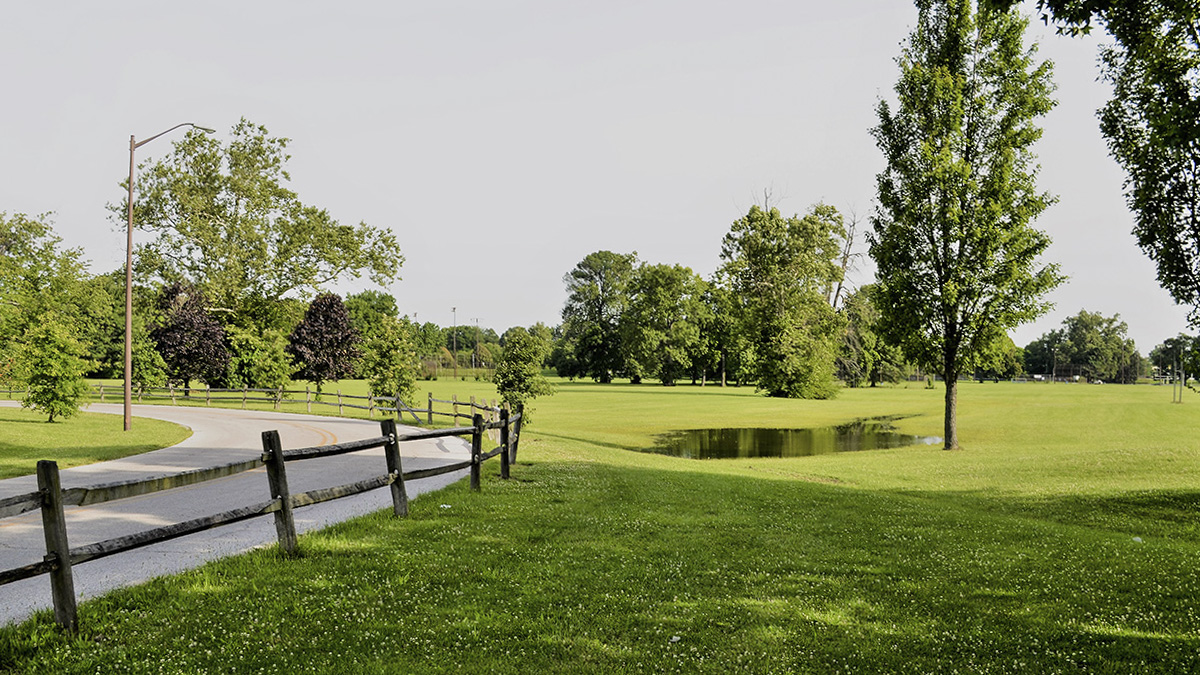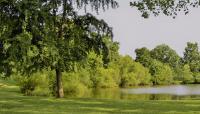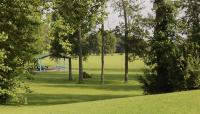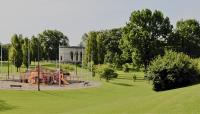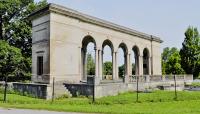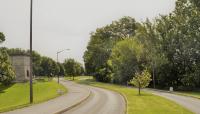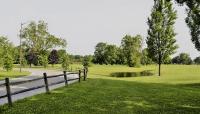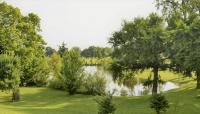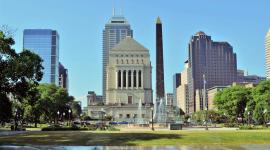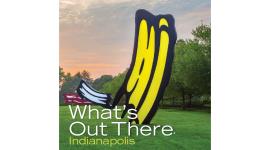Landscape Information
Located along the east bank of the White River on the near northwest side of Indianapolis, this gently sloping 96-acre site is bounded by 30th Street, Burdsal Parkway, White River Parkway East Drive and East Riverside Drive. Historically an agrarian landscape, it was purchased for use as a public park in 1898. While the park was developed incrementally over its first ten years, the design was accelerated in 1908 when George Kessler incorporated it into his Park and Boulevard System. Completed in 1913, the original master plan for Riverside extended across the river and north beyond 38th Street, and included three neighboring golf courses that predate the park. Remnants of the earliest phase of development remain in the form of picturesque rustic wooden benches and shelters designed to emphasize the natural landscape. Kessler’s plan incorporated informal interior roadway and path alignments surrounding large meadows and shade lawns, and formal, tree-lined roads along the park’s perimeter. Much of his design, including the park’s interior circulation system, is now lost. Vegetation has been dramatically modified over time, though groves along the west bank floodplain may contain residual historic plantings.
The Taggart Riverside Park Monument, located at the park’s entrance off Burdsal Parkway, was designed in 1931 by architect C. McCullough as part of landscape architect Lawrence Sheridan’s site plan update. This neoclassical limestone structure sits on a balustrade terrace that offers views of the river and surrounding neighborhoods. The park was included in the National Register of Historic Places in 2003 as part of the Indianapolis Park and Boulevard System.



